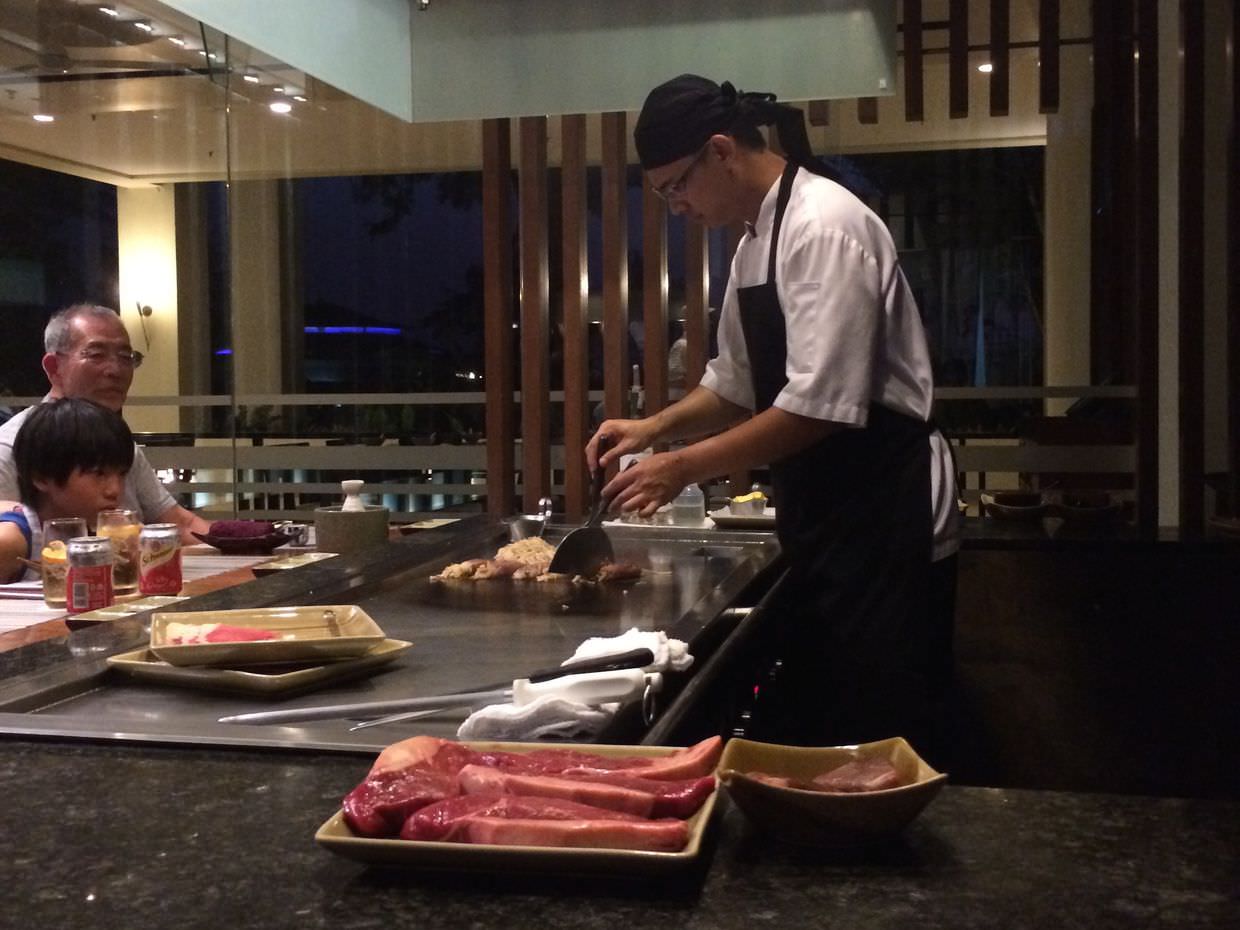Orangutan sanctuary and Teppan-yaki cuisine
Breakfast at the Rasa Ria was what we’ve come to expect from five star resorts, a buffet of epic proportions. Fresh salmon, century eggs, marbled tea-eggs, noodles, rice, fresh tropical fruits, pancakes, waffles, eggs any way you want them, a fry-up (with beef bacon), sushi, noodle soups, pastries, cereal, yoghurts, a cheese board — pretty much everything except pork and bacon. All served from the Coffee Terrace. We discovered a few days later that you can also go to Coast for free a la carte breakfast (plus buffet), which included complimentary prosecco.
Orangutan sanctuary
One of the main reasons for our visit to this luxurious hotel was the onsite nature reserve and orangutan sanctuary. It meant we didn’t have to squeeze in a trip to Sepilok in our two short weeks. The sanctuary takes in orphaned and rescued orangutan youth, and brings them to Sepilok when they are rehabilitated and ready to join others. Before arriving we booked ahead, and paid for a Sunday morning slot to see them.
After breakfast we wandered across the resort to the nature reserve, passing beneath the trees where the hornbill and scarlet macaws spend the day. The birds have had their wings clipped, but they too are rescues. The entrance to the reserve sits next to a Segway circuit, nestled amongst trees and somewhat hidden
A large group of us, perhaps 30, watched a video that demonstrated the work done here, before filing into the reserve and up the dirt path towards the viewing platforms. In the daylight a tame mouse deer watched us, and a pen housed Sambar deer. At the wooden platforms we chose our spot; a good view, a bit of shade, and once again, like in Semenggoh we waited for orangutans.
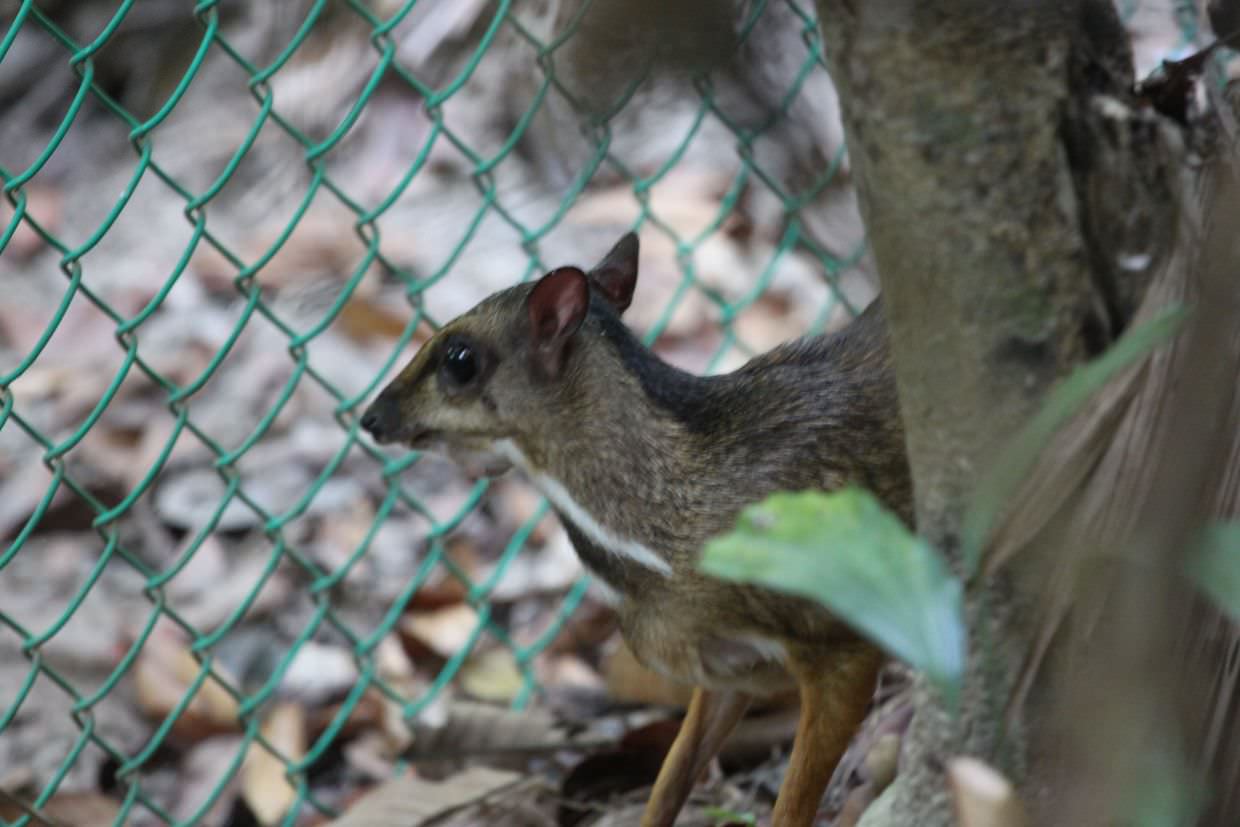
Two young male orangutan
After 10 minutes there was a rustling in the trees, you could see the treetops swaying left and right. Two young males swung from the branches, one, then another, from the trees to the ropes and on to the feeding platform, to gather their breakfast. They scoffed their faces with bananas and fruit and dopily climbed to the tree tops. We watched them for half an hour, mesmerised by their lanky arms, grabbing feet and dark piercing eyes. Samantha and I swapped between zoom lens and binocs, alternating between photos and a better view. Eventually they nestled down in the branches high above us, in their newly made nest of leaves, settled down and out of sight.
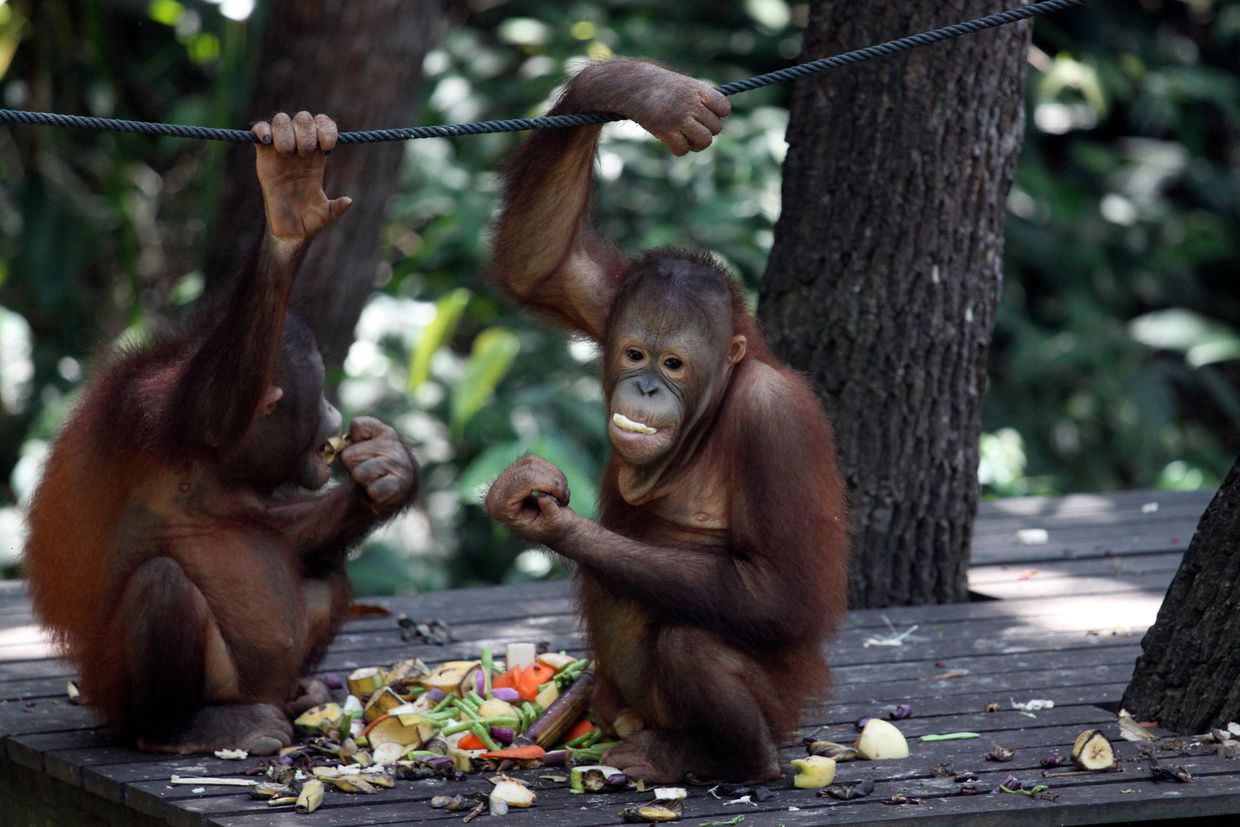
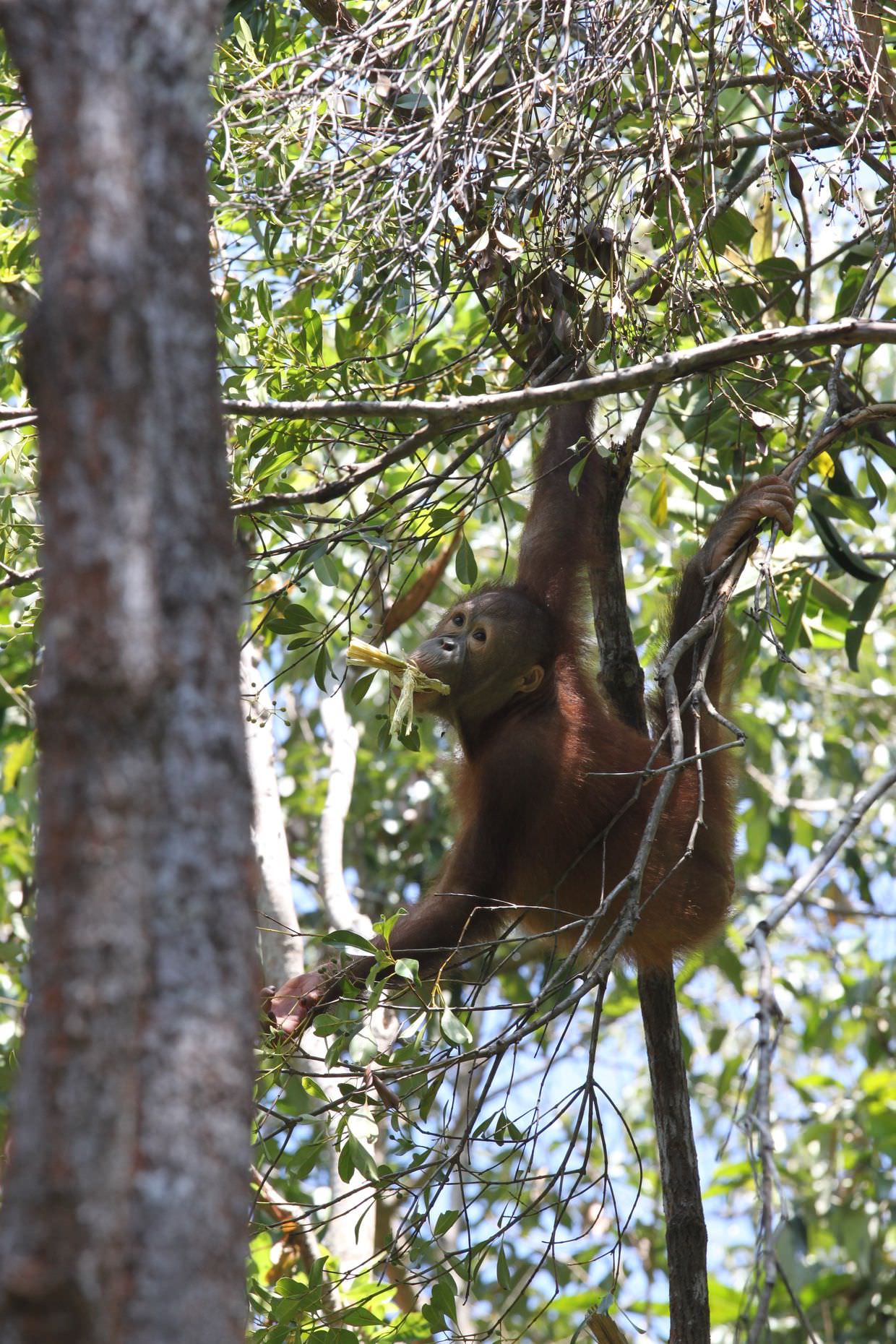

Timid canopy walk
There are three orangutans here, the third is female, she is new and still very shy. A fourth recently left the park, to continue rehabilitation at Sepilok. After the apes we followed the park’s canopy walk, a leisurely and timid affair, a couple of rope bridges slightly above the forest floor, the highlight was a view out across the beach.
The people we met at Shangri-la were much older than us, mostly in their late forties or fifties. A couple from the UK, they’d been here for two weeks told us about a snake they’d spotted at the park entrance. Sure enough, on a branch, perfectly camouflaged (you’d walk right past it unless you knew to look), a Bornean keeled pit viper. Light green on top, pale underneath, it sat perfectly still and was unfazed by the family of long-tailed macaques that began playing nearby. “Is it poisonous?”, “Yes, very”. Some snakes of this species are even nicknamed the “100 pace snake”, if bitten you can walk 100 paces before dropping dead. Lovely, let’s not get too close.

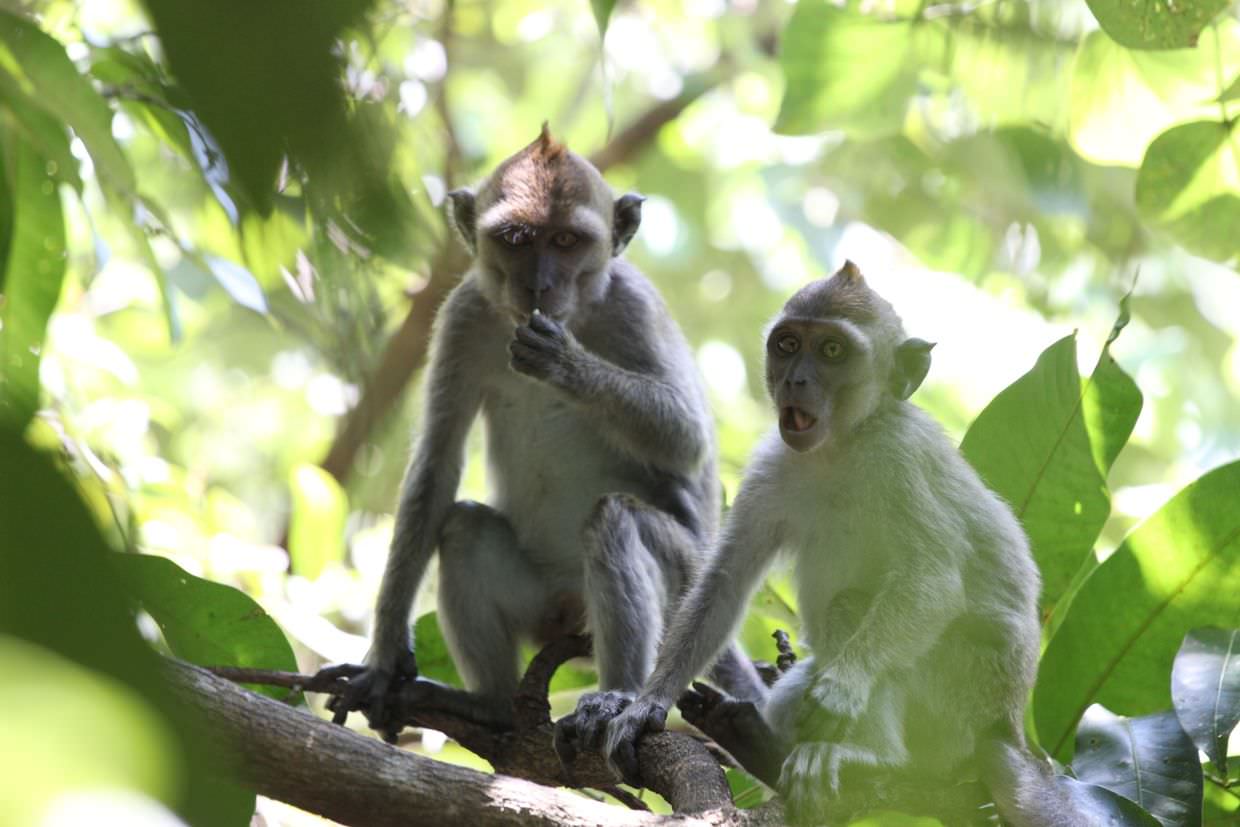
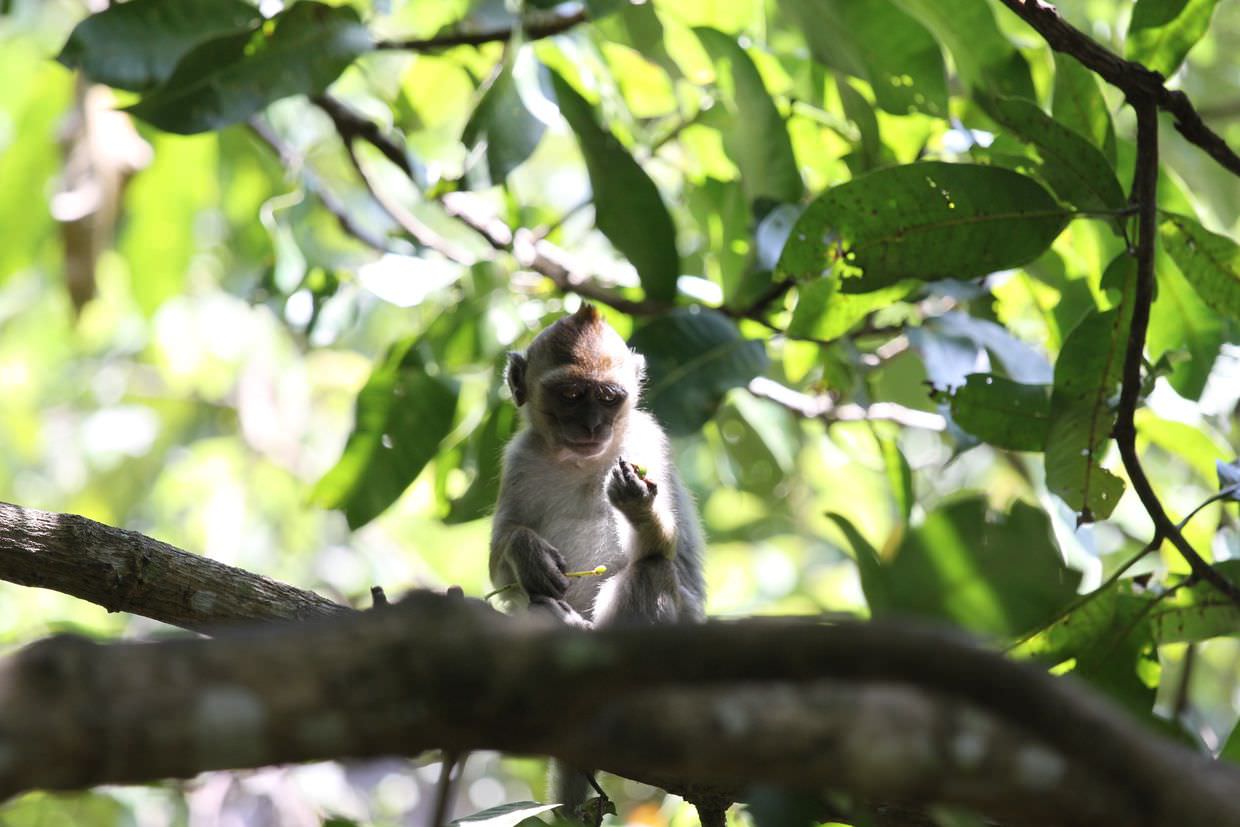
As everyone else was leaving, we stuck around to watch the playful macaques, about 7 of them. They hung from their tales and squabbled over fruit, wrestled in the leaves, and groomed each other.
For the rest of the day we relaxed by the (warm) pool, drinking ice cold lime soda. The poolside food was tasty too, just a pizza and burger for us, nothing too fancy. And the sunset was again spectacular, the sky turned orange and the sun melted into the ocean.
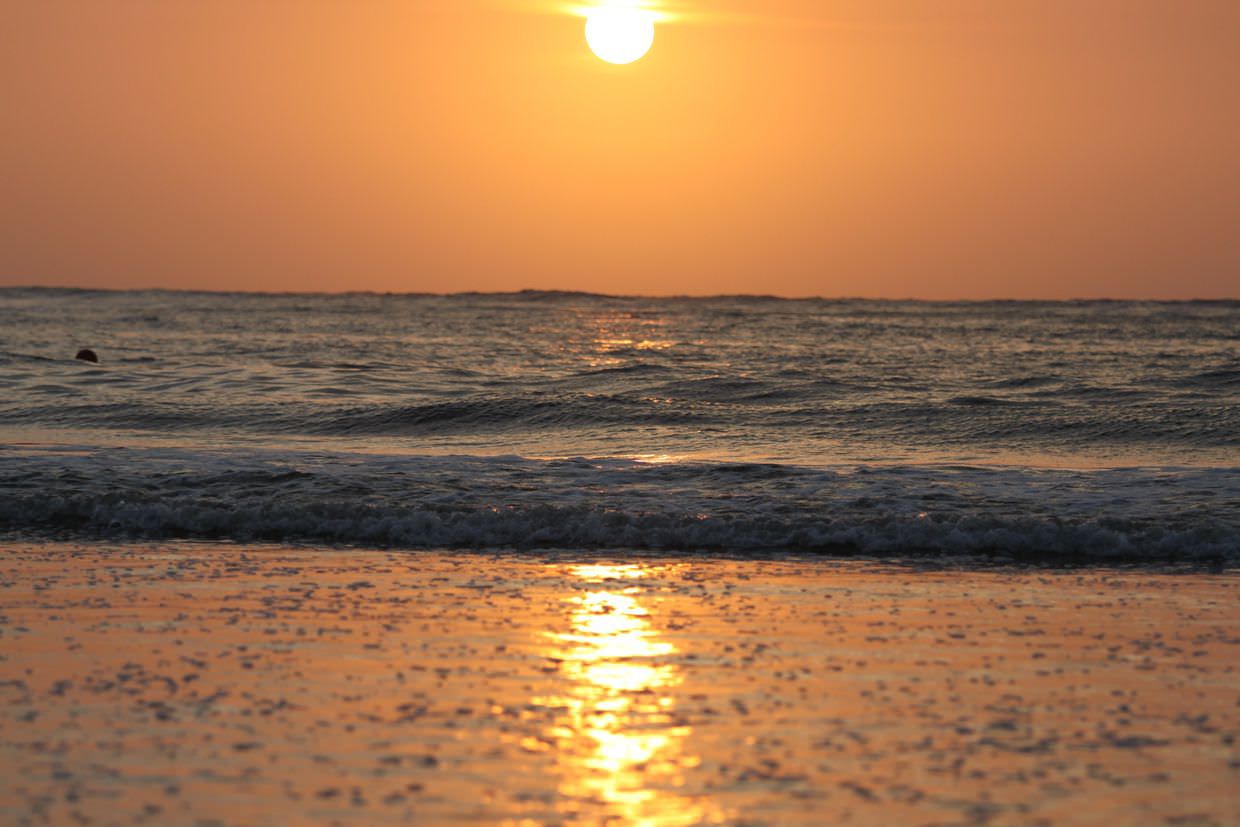
Teppan-yaki Kozan restaurant
Another of the onsite restaurants is Teppan-yaki Kozan. Teppan-yaki is a style of Japanese cuisine where food is elaborately and artistically cooked in front of you by a chef using an iron griddle. You’ve got to book ahead as meals are cooked in sittings, we sat down with three generations of a Japanese family, and chose the Kumamoto menu.
Samantha sat next to a lovely Japanese grandmother, who chuckled and helped us as we apparently used our chopsticks incorrectly, dropping sushi rice and fish everywhere. The youngest child was bewildered by our ineptitude. For the rest of the meal we were self-conscious; we waited, watched and copied the family, to avoid another faux-pas.
But it was the chef that stole the show. He used cooking utensils with the skill of a martial artist. Scrape, swoosh, scrape, he moved and cooked food with precision. Steak was balanced on its fatty edge, then flipped and sealed and flame cooked in an alcohol fuelled explosion. Eggs were thrown into the air, catching the shell on his spatula — cracking it open and releasing the yolk onto the hot plate to cook, just part of our fried rice. Between juggling salt and pepper he seared our sea bass to perfection. Delightful.
